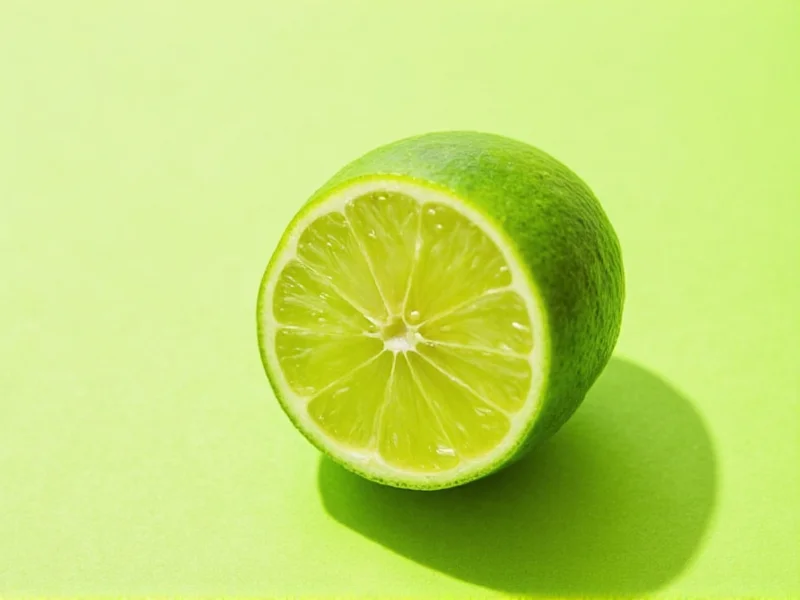Understanding precise lime juice measurements is essential for perfecting recipes, whether you're crafting cocktails, preparing ceviche, or making homemade guacamole. Getting the proportions right affects flavor balance and can make or break your culinary creations.
Factors That Affect Lime Juice Yield
The exact amount of juice you extract from a single lime depends on several variables:
Size Matters
Limes come in different sizes. Grocery store limes typically range from small (1.5-2 inches in diameter) to large (2.5-3 inches). Here's how size impacts juice yield:
| Lime Size | Approximate Juice Yield | Equivalent in Recipes |
|---|---|---|
| Small (1.5-2") | 1-1.5 tbsp (15-22 ml) | 1/2 standard recipe portion |
| Medium (standard) | 2 tbsp (30 ml) | 1 standard recipe portion |
| Large (2.5-3") | 2.5-3 tbsp (37-45 ml) | 1.25-1.5 standard portions |
Ripeness and Temperature
Ripe limes contain more juice than underripe ones. Look for limes with smooth, deep green skin that feel heavy for their size. Room-temperature limes yield up to 20% more juice than cold limes straight from the refrigerator. For maximum extraction, microwave limes for 10-15 seconds or roll them firmly on the counter before cutting.
Juicing Technique
Your method significantly impacts how much juice you extract:
- Hand squeezing: Yields about 1.5-2 tbsp from a medium lime
- Citrus reamer: Increases yield by 15-20% compared to hand squeezing
- Electric juicer: Maximizes extraction, potentially yielding up to 2.5 tbsp
- Rolling before cutting: Simple technique that can increase juice yield by 25%
Measurement Conversions for Recipe Success
When following recipes, understanding lime juice measurements across different units prevents kitchen disasters. Here's a comprehensive conversion guide:
| Measurement | Equivalent | Common Recipe Use |
|---|---|---|
| 1 medium lime | 2 tbsp / 1 fl oz / 30 ml | Standard cocktail, small batch guacamole |
| 1 cup lime juice | 8 medium limes | Ceviche for 4-6 people |
| 1/4 cup lime juice | 2 medium limes | Dressing for 2 salads |
| 1/2 cup lime juice | 4 medium limes | Cocktail pitcher (6-8 servings) |
Key Limes vs. Persian Limes: Understanding the Difference
Many people confuse Key limes with the more common Persian limes. Key limes are smaller (1-2 inches), more aromatic, and yield less juice:
- Key lime: Approximately 1 tablespoon (15 ml) per lime
- Persian lime: Approximately 2 tablespoons (30 ml) per lime
When a recipe specifies Key lime juice but you're using Persian limes, adjust quantities accordingly. For authentic Key lime pie, you'll need about twice as many Persian limes to achieve the same tart flavor profile.
Practical Tips for Maximizing Your Lime Juice
Professional chefs and bartenders use these techniques to extract every drop of juice:
- Warm before juicing: Roll limes on the counter with palm pressure or microwave for 10-15 seconds
- Cut crosswise: Slicing across the diameter exposes more juice vesicles than cutting lengthwise
- Use the right tool: A handheld reamer outperforms manual squeezing by 20-25%
- Squeeze over recipe: Catch every drop directly in your mixing bowl to avoid waste
- Reserve the zest: One medium lime yields about 1 tablespoon of zest for additional flavor
When Precision Really Matters
Certain applications require exact lime juice measurements:
- Cocktail making: Margaritas need precise 1:1:1.5 ratios (tequila:triple sec:lime juice)
- Ceviche preparation: Acid balance affects protein denaturation and food safety
- Baking: Lime juice interacts with baking soda for proper rise
- Preserving: Canning recipes require specific acid levels for safety
For critical applications, measuring juice after extraction rather than relying on lime count produces more consistent results. A small kitchen scale provides the most accurate measurements when perfection matters.
Fresh vs. Bottled Lime Juice: What Science Says
While fresh lime juice is superior in flavor, understanding when bottled works can save time. Studies show:
- Fresh lime juice contains higher levels of volatile aromatic compounds
- Bottled juice often has preservatives that alter flavor profiles
- For cocktails where lime is the star ingredient, fresh juice is essential
- In complex dishes with multiple ingredients, bottled juice may suffice
When substituting bottled for fresh, use 10-15% more bottled juice to compensate for flavor degradation. However, for applications like Key lime pie or ceviche, fresh juice delivers noticeably better results.











 浙公网安备
33010002000092号
浙公网安备
33010002000092号 浙B2-20120091-4
浙B2-20120091-4